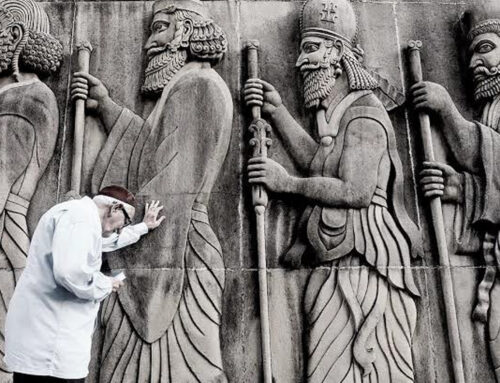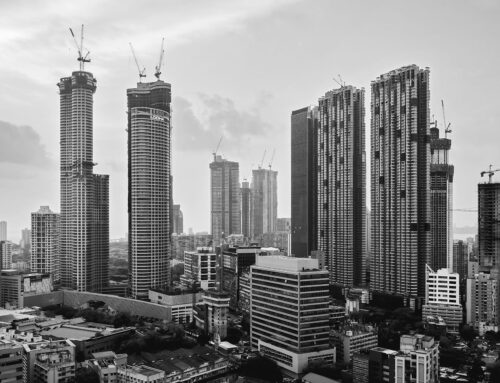

Mumbai, the city of dreams, witnessed a migration rate of about 43.02% according to the 2011 census due to its rapid development and industrialization. Each day, a significant number of individuals in India forsake their rural roots in favour of urban life, with approximately 1000 migrants making their way to Mumbai alone. The population of this bustling metropolis doubles every 23 years and experiences an annual growth rate of 3%. Renowned for its swift expansion and flourishing job market, Mumbai stands as one of India’s fastest-growing cities offering promising opportunities for employment along with an enhanced standard of living. However, the influx of migrants often strains the city’s capacity to accommodate its residents, leading to the loss of open spaces.
The real estate sector in Mumbai has experienced a surge due to the escalating income levels and a positive perception of property ownership. As per recent data released by the Maharashtra government, the real estate market in Mumbai witnessed 1,27,139 property registrations in the year 2023, marking a four percent escalation from the previous year’s figure. However, amidst this growth lies a dark shadow cast by illegal constructions that have tarnished the reputation of Mumbai’s real estate landscape. The Bombay High Court is inundated with cases pertaining to unauthorized structures mushrooming across the city. An affidavit presented by KDMC’s advocate revealed that over the past three years alone, a staggering total of 2704 structures were served notices, out of which 1004 were deemed unauthorized and ultimately met with demolition orders amounting to a distressing tally of 2967 demolished properties.
Why is Unauthorised Construction Mushrooming in Mumbai?
Unauthorized construction and increasing urban real estate prices are incompatible, leading the middle class to turn a blind eye to the illegalities in order to secure a more affordable home. Despite the exploitation by deceitful developers, elected officials, and local authorities who take advantage of the situation by constructing illegal buildings and selling homes below market value, the demand for housing and potential profits have fueled the prevalence of illegal construction in Mumbai.
What is considered as Unauthorised as per Law?
The approved map is a foundation and legally binding for building construction. The building’s owner or occupant cannot make changes once the plan is approved but can request modifications after approval. The building plan is approved in accordance with notified statutory building bylaws. The sanction plan is the sacred document that must be adhered to and the bylaws govern the entire structure.
In accordance with Section 152A of the Mumbai Municipal Corporation Act, any edifice impeding the circulation of air or hindering sanitary operations may be subjected to demolition, with a grace period of two months for its dismantling. Furthermore, construction carried out without proper authorization or in defiance of municipal regulations warrants severe consequences for the developer. An annual penalty amounting to twice the property tax applicable on the building shall be imposed until compliance is achieved. This provision serves as a strict deterrent against unauthorised constructions and acts as a safeguard for maintaining public health and safety standards within the city limits.
However, according to section 52A of the Maharashtra Regional and Town Planning (MRTP) Act, The state government may develop a plan to regularise or compound irregular or illegal structures that were built on or before December 31, 2015.
How does this unauthorized business operate?
Numerous structures are in dire need of restoration or are on the brink of decay. Small-time developers and the owners of these buildings take advantage of this and request municipal authorities to take necessary actions. Upon receiving the necessary permits, they promptly engage in renovations and swiftly add new stories with the assistance of skilled ‘weekend builders. Multiple edifices along Mohammed Ali Road, Masjid Bunder, Abdul Rehman Street, Kalbadevi, Pydhonie, Nal Bazaar, Zaveri Bazaar, Nagpada, and Byculla have sprouted three to five additional floors practically overnight through this expedited construction process.
What Permissions are needed to build a house?
According to Section 43 of the Maharashtra Regional and Town Planning Act, 1966, any development activity must be approved by the following authorities:
- Approval from local municipal corporation, municipal council, or Nagar panchayat
- No Objection Certificate (NOC) from various departments including Tree Authority, Storm Water and Drain Department, Sewerage Department, Electric Department, Traffic and Coordination, Environment clearance, Chief Fire Officers, and Occupancy certificate from BMC
- Permissions from the Airport Authority of India / Coastal area if the land is around these sites
What Procedures does BMC follow before demolishing a building?
- Under Section 351 of the Mumbai Municipal Corporation Act 1888, BMC issues a notice, akin to a show cause notice, to the owner or occupier. This provides an opportunity to disclose any permissions granted for the construction.
- Under Section 354A of the Mumbai Municipal Corporation Act 1888, a notice is served to the owner or occupier requesting to ease construction or work if the Designated Officer determines that the work has begun or is continuing illegally.
Conclusion
Addressing unauthorized construction in urban development requires a multifaceted approach. This involves enforcing existing laws rigorously and collaborating effectively between the judiciary, law enforcement, and government agencies. Public awareness campaigns and streamlined permit procedures can help foster compliance and accountability among citizens while tackling the socio-economic root causes. By combining regulatory enforcement, citizen engagement, bureaucratic reforms, and socio-economic interventions, we can promote sustainable urban development and create safer, more inclusive cities.

Nandini Dey
Research Assistant, Mumbai First




